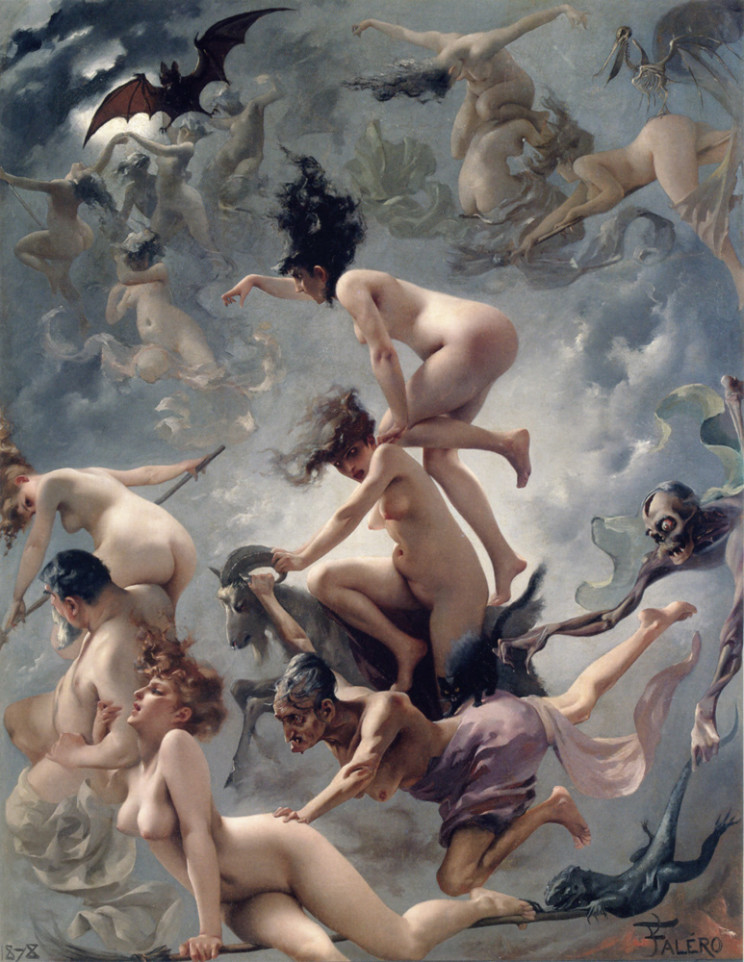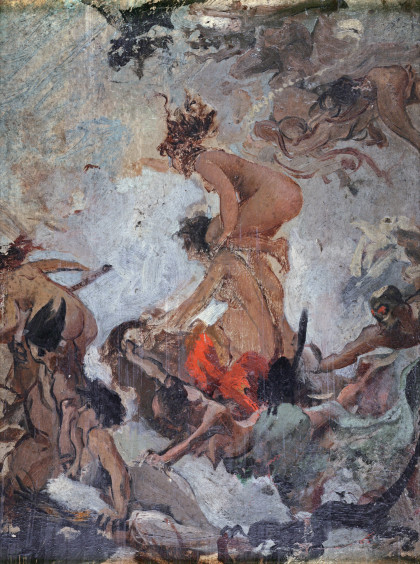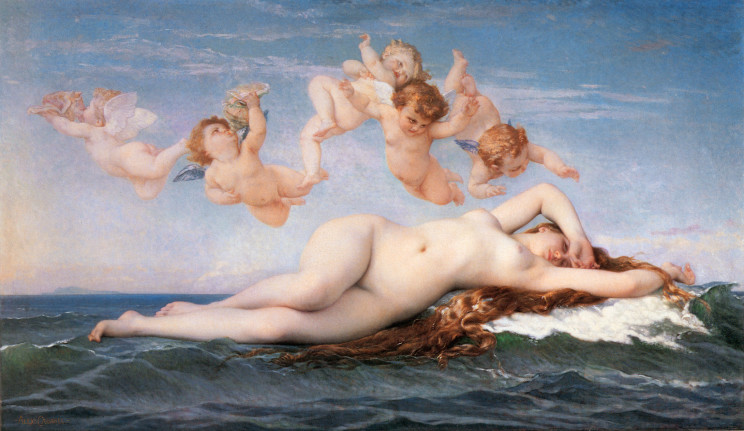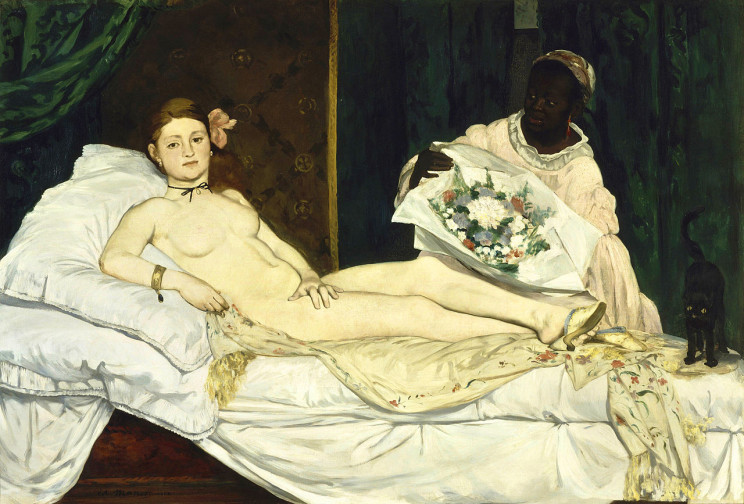In Goethe's Faust, Mephistopheles takes Faust to a mountain where he witnesses a Witch's Sabbath (a.k.a. Witch's Shabbat). The unholy meeting of demons and humans featured satanic offerings and resulted in plagues. Stories of these gatherings have a long history in European literature. (For more, go here.) The women who attend are traditionally skyclad, a ritual nudity practiced by pagans and witches.

This work is scandalous by most people's sensibilities–including mine–however, it is illustrative of contradictory attitude towards nudity in nineteenth century France and most of western society. At a time when it was shameful to see a woman's ankles in public, it was somehow acceptable for more-than-suggestive works featuring nudity, as long as the narrative was tied to some redeemable theme.
This selective bias bias is perhaps best illustrated in the debate between Alexandre Cabanel's The Birth of Venus (1863) and Édouard Manet's Olympia (1863). Both featured nude woman and were accepted to the same national contest where they were exhibited to the public.
But, while Cabanel's was considered to be a critical success and continuation of the classical tradition, Manet's was seen as obscene for its realistic approach to the female nude.
In his day, Luis Ricardo Faléro (Spanish, 1851-1896) was a consumately trained academic painter, whose work fit soundly within the contraditions of his time. His works were prized for their thinly-vieled eroticism. But, collectors could maintain their reputation by pointing to the "merit" of their subjects.


